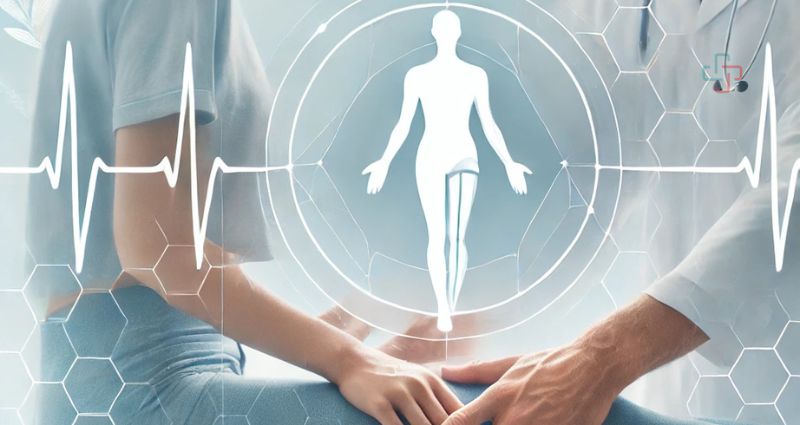Robot-Assisted Physiotherapy: Advancing Rehabilitation Through Cutting-Edge Technology
Robot-Assisted Physiotherapy: Advancing Rehabilitation Through Cutting-Edge Technology
The integration of robotic-assisted physiotherapy into rehabilitation medicine represents a paradigm shift in the management of neuromuscular and musculoskeletal disorders. At Sai Healthcare Wellness Center, we utilize robotic rehabilitation systems to enhance therapeutic outcomes, optimize movement recovery, and improve functional independence for patients with varying levels of mobility impairment.
The Role of Robotics in Physiotherapy and Rehabilitation Medicine
Robotic-assisted physiotherapy is a rapidly evolving discipline that combines biomechanical engineering, artificial intelligence (AI), and neurorehabilitation techniques to facilitate motor recovery. Unlike conventional physiotherapy, robotic rehabilitation provides:
- Precision-guided movement patterns that enhance neuroplasticity and functional recovery.
- Adaptive therapy programs tailored to individual patient needs and motor deficits.
- Integration of virtual reality-based rehabilitation to improve patient engagement and compliance.
- Objective performance metrics to track patient progress in real-time.
This technology is particularly beneficial for patients undergoing upper-limb rehabilitation post-stroke (Stroke Recovery with Robotics) or orthopedic injuries, as it enables targeted exercise regimens while minimizing compensatory movements.
Exoskeleton Technology: A Breakthrough in Functional Recovery
Exoskeletons, once a concept associated with biomechatronics and assistive robotics, have now become a cornerstone in rehabilitation medicine. These wearable robotic devices provide mechanized support to individuals with neuromuscular impairments, enabling them to regain mobility through robotic-assisted gait training and limb support mechanisms.
Robotic Rehabilitation at SAI Healthcare Wellness Center
At Sai Healthcare Wellness Center, we employ advanced robotic exoskeletons such as REX and ReWalk to assist patients with severe mobility impairments. These state-of-the-art rehabilitation systems facilitate weight-supported locomotion training, allowing patients to perform therapeutic exercises while maintaining a natural and controlled movement pattern.
Indications for Robotic-Assisted AI Physiotherapy Technology
Robotic rehabilitation therapy is clinically indicated for individuals with:
- Ischemic or hemorrhagic stroke-related motor deficits.
- Spinal cord injuries (SCI) up to level C4.
- Neurodegenerative disorders, including multiple sclerosis and muscular dystrophy.
- Post-surgical orthopedic conditions requiring neuromuscular re-education.
Clinical Benefits of REX and ReWalk Technologies
REX: Enhancing Neuromuscular Rehabilitation
- Provides full-body stabilization in an upright position, eliminating the need for additional support.
- Facilitates robotic-assisted functional exercises that promote muscle activation and strength recovery.
- Optimizes postural alignment and weight distribution, crucial for patients with quadriplegia or hemiparesis.
ReWalk: Advancing Gait Training in Spinal Cord Injury Patients
- A wearable exoskeleton that enables individuals with paraplegia to regain ambulation.
- Restores biomechanically efficient gait patterns, mimicking physiological lower-limb movement.
- Allows for independent ambulation, including standing, walking, and stair-climbing, significantly improving the patient’s quality of life and cardiovascular health.
The Future of Robotic-Assisted Physiotherapy
Despite its transformative potential, the widespread adoption of robotic rehabilitation is contingent on cost-effectiveness, accessibility, and specialized training for physiotherapists. As the field progresses, neurorehabilitation robotics will become more affordable and clinically integrated, ensuring greater accessibility to advanced physiotherapy in Patna.
At Sai Healthcare Wellness Center, we are committed to delivering evidence-based, technologically advanced rehabilitation services. Whether you are recovering from a neurological injury, orthopedic trauma, or degenerative condition, our robotic-assisted physiotherapy programs are designed to optimize your functional independence and motor recovery.
Experience the future of rehabilitation at Sai Healthcare Wellness Center – where innovation meets patient-centered care!

